Hospitality magazine is proud to present the second iteration of the 50 Gamechangers initiative. This year, the program celebrates the teams behind some of the country’s most groundbreaking venues that make up the diverse fabric the local industry is made of.
From pocket-sized venues that serve 10 diners at a time to the establishments growing their own produce and others making a damn good bowl of noodles, the 50 Gamechangers quite simply do it like no other.
Ursula’s
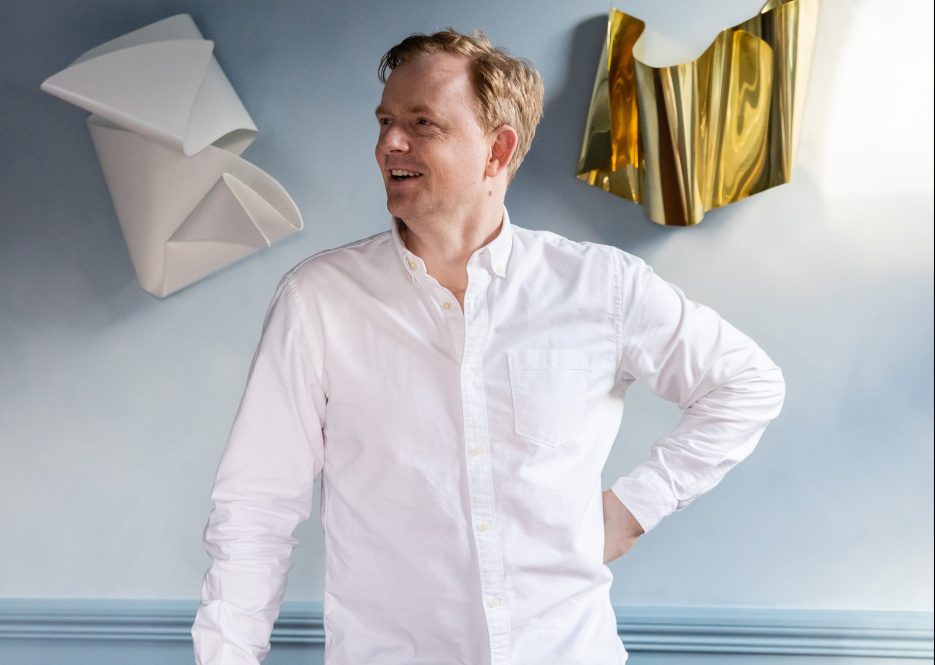
Ursula’s is quite simply, a beautiful place to enjoy a meal in. Phil Wood and his wife Lis Davies poured their all into the neighbourhood fine diner in Sydney’s Paddington that goes heavy on the charm. Wood spent much of his career working under some of the world’s best chefs from Tetsuya Wakuda to Thomas Keller before helming Pt. Leo Estate. Years of experience in heavy-hitting kitchens culminated in Ursula’s; a restaurant that pays equal attention to the fit-out as it does to the menu. Diners are cocooned by periwinkle blue or pumpkin pie-coloured walls as much as they are by a plate of Moreton Bay bug pasta with parmesan and warming crustacean butter. The front-of-house team is lightning-quick on their feet, expertly delivering plates to linen-clad tables with a description of each dish, a smile and an “enjoy”.
Sushi Oe
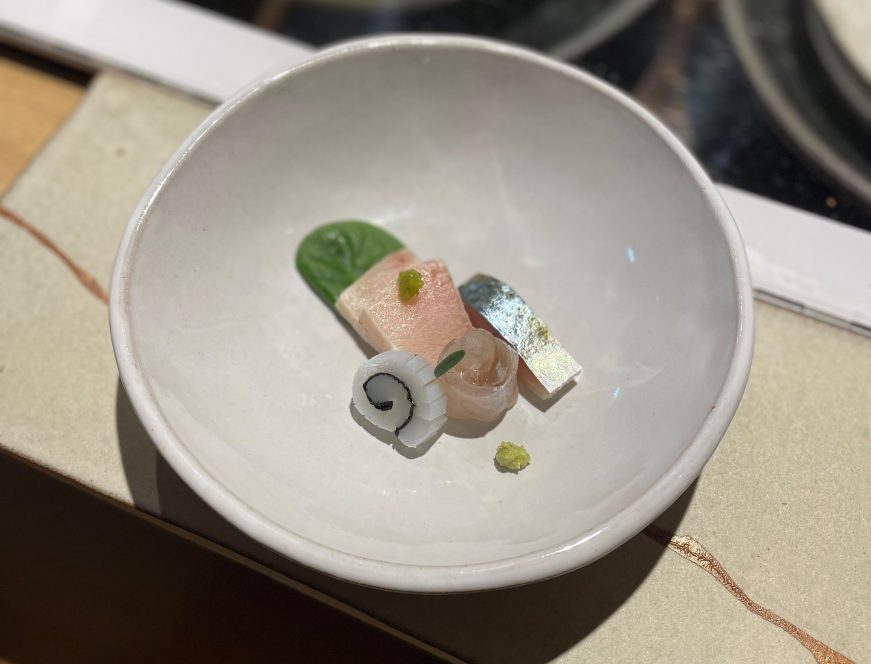
Chef Toshihiko Oe helms the counter of his namesake omakase restaurant Oe, which is concealed behind noren curtains inside a Japanese restaurant on Sydney’s Lower North Shore. The space has six seats that surround the chef, who releases monthly bookings via text. It’s perhaps the most difficult seat in the city to nab, but it’s certainly worth the wait to experience the chef at work. Oe meticulously slices the seafood he purchases from the markets each morning, relaying the story and flavour profile of each piece as he places it in front of diners. Omakase means chef’s choice, and Oe’s is showcasing produce at the height of its season, whether it’s wild southern blue fin tuna or white sea urchin.
Sang by Mabasa
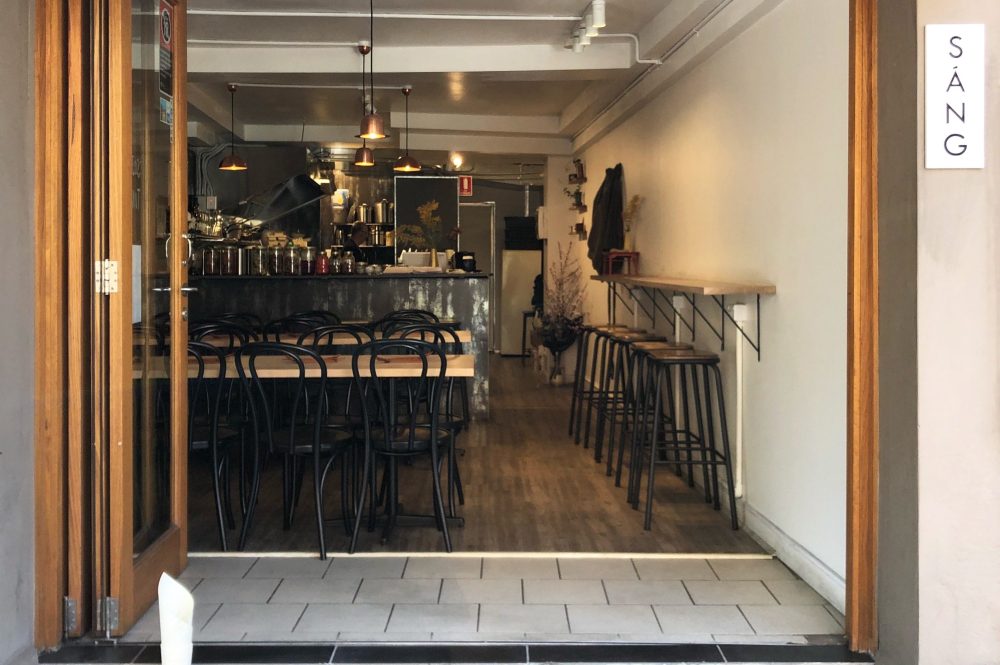
Sang by Mabasa in Sydney’s Surry Hills is run by Chefs Seung-kee Son, Jin-sun Son, their son Kenny Yong-soo Son and his partner Youmee Jeon. The hole-in-the-wall restaurant has never wavered on its journey of bringing traditional Korean dishes to the dining public since it opened back in Balmain. Dinner at Sang can look like yukhoe (raw Wagyu, Asian pear, cucumber, perilla, egg yolk, crispy mung bean); dak moraejip (charred chicken gizzards, garlic, green chilli, gochugaru, sesame oil) or bossam (pork belly, seasoned radish, ssamjang, salted shrimp, kelp, pickled gai lan). There’s a weekly lunch special for walkins, with everything from gimbap to yangnyeom gejang (marinated raw crab) running thus far. Sang is the type of restaurant that simultaneously evolves while staying true to its roots.
Moonah

Many restaurants preach a paddock-to-plate ethos, but Tobin Kent is one of a handful of restaurateurs who can call themselves the chef and the producer. Kent quietly opened his regional 12-seater in Connewarre, Victoria, two years ago and sustains the fine diner with 95 per cent of its fruit and vegetables from his own land and the surrounding area. Proteins are selected according to their sustainability credentials instead of their status and the wine list (also curated by Kent) spotlights makers with the same ethos as the restaurant. Kent and his team change dishes in line with ingredient availability, often having to think on their feet and innovate (a walk down to the wetlands is an example) when something runs out. It’s an approach that necessitates hard work and an adaptable mind, but it fuels what Moonah is all about; a produce-centric dining experience.
Kiln
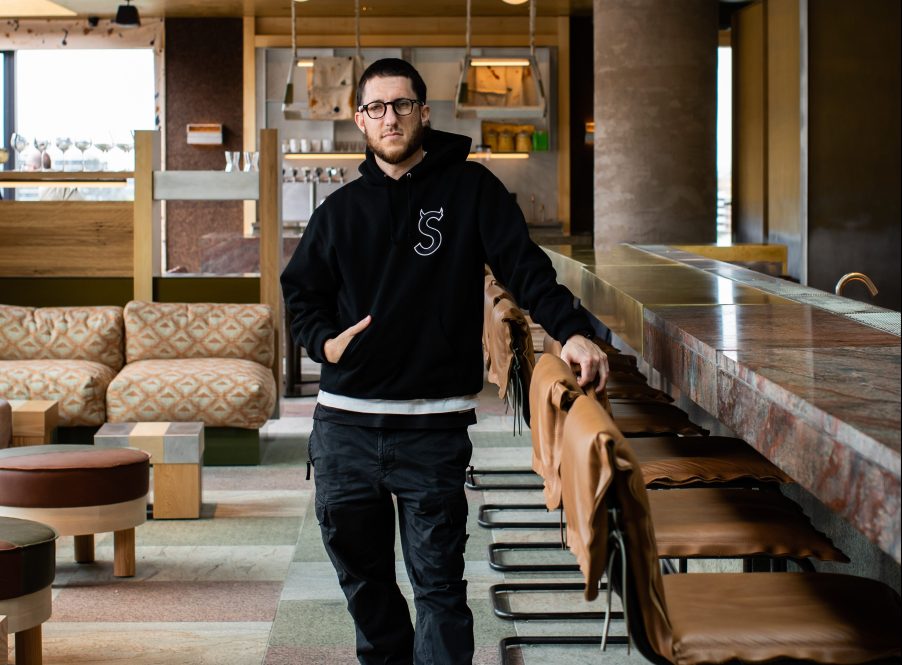
There’s no doubt Mitch Orr was missed on the dining scene, and it was no surprise he was the chef of choice to front Ace Hotel Sydney’s signature restaurant Kiln. The rooftop eatery features panoramic views of its Surry Hills home and beyond, with the dining room structured around an open kitchen decked out with a wood-fired hearth. Orr’s signature Jatz snack has returned alongside his high–low approach to cooking. Grilled Abrolhos Island scallops are paired with preserved lemon butter; marron with desert lime and long pepper and dry-aged rib-eye with ponzu. Mike Bennie is behind the wine list, and has curated mostly Australian/boundary-pushing drops across glass, carafe, bottle and tap. Cocktails span Italian and Asian influences, with spritzes coming out as the drink of choice at the 108-seat diner.
Porkfat
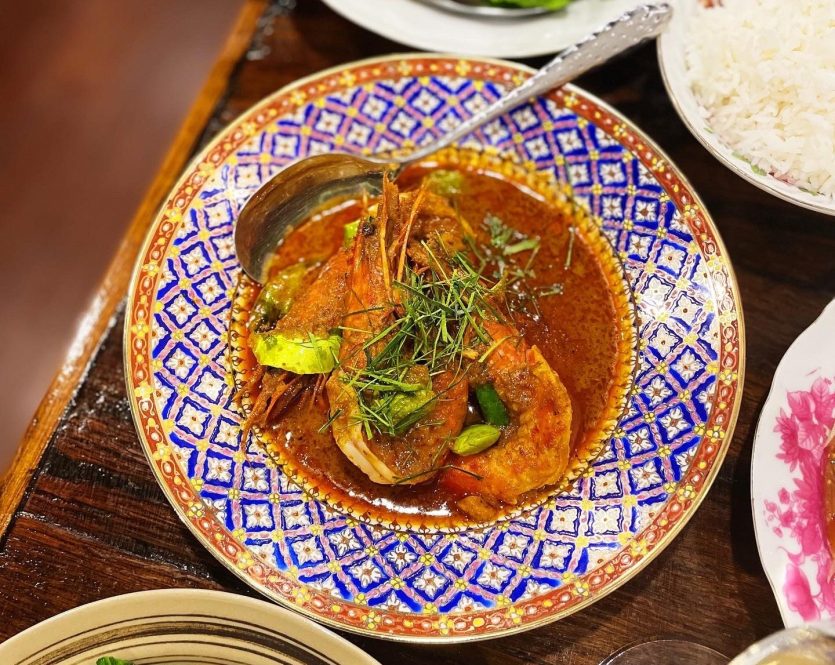
Thai restaurants abound in Sydney, but Porkfat instantly changed the game when it swung open its doors in September this year. The dual-level Haymarket restaurant is the first venture from Long Chim alum Narin Kulasai, who worked in the kitchens of Bennelong and Nahm Bangkok before launching the restaurant. Porkfat’s menu features traditional recipes with a considered approach — all curry pastes and sauces are made in-house and used across dishes such as stir-fried sator beans with tiger prawns and a southern-style curry with prawns and black pepper. The staple papaya salad is levelled up with salted duck egg, while grilled pork jowl with smoked chilli jam nib is served with roasted rice, tamarind and lime. Dessert is not to be skipped on — and when there’s only one option, you know it’s going to be good. A scoop of Amphawa’s homemade coconut ice cream sees a snow-white scoop served with roasted peanuts, palm seeds and candied pumpkin — not too sweet and simply good eating.
Lana
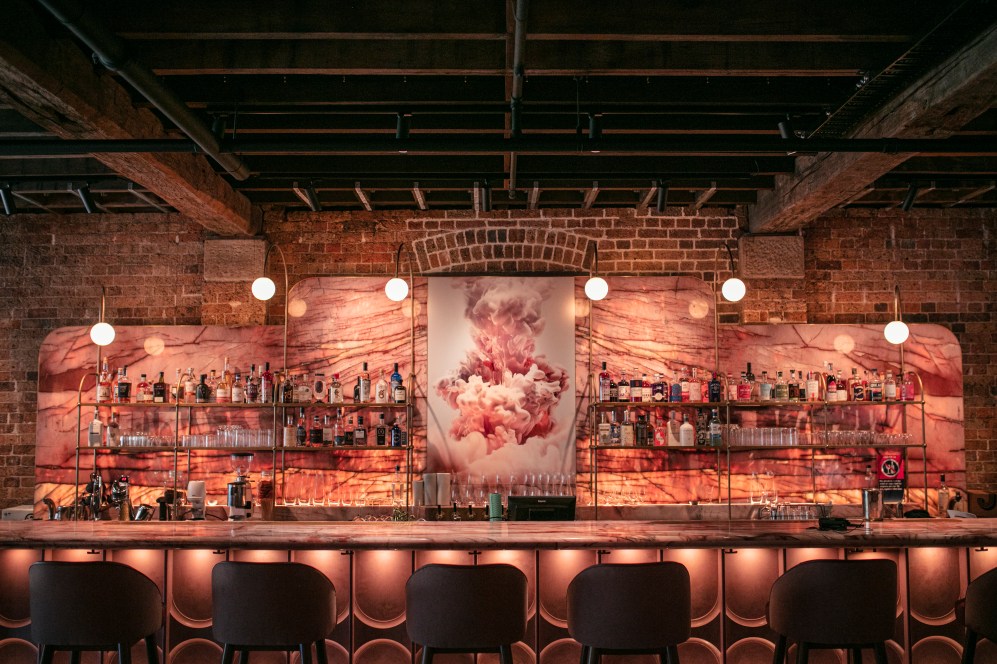
Hinchcliff House’s upscale restaurant Lana was originally billed as a seafood/ Mediterranean-leaning concept, but it’s morphed into something much more under
Chef Alex Wong. There’s no doubt the Sydney restaurant had a rough start, forced
to open and close during lockdowns, but it hit its groove this year with a menu that
blurs Italian and Asian influences into some of the best snacks and dishes currently
going around in the city. Cucumber spears give a sushi experience with sesame
and pumpkin seeds, while live lobster spaghetti is umami-ed up with XO, tomato,
saffron and basil. The No Love Lost menu gave Sydneysiders an excuse to go out on
Tuesday and Wednesday nights during the notoriously slow month of August, with the $79 multi-course menu providing a blank canvas for Wong to test-drive dishes and repurpose waste from the a la carte menu.
10 William Street
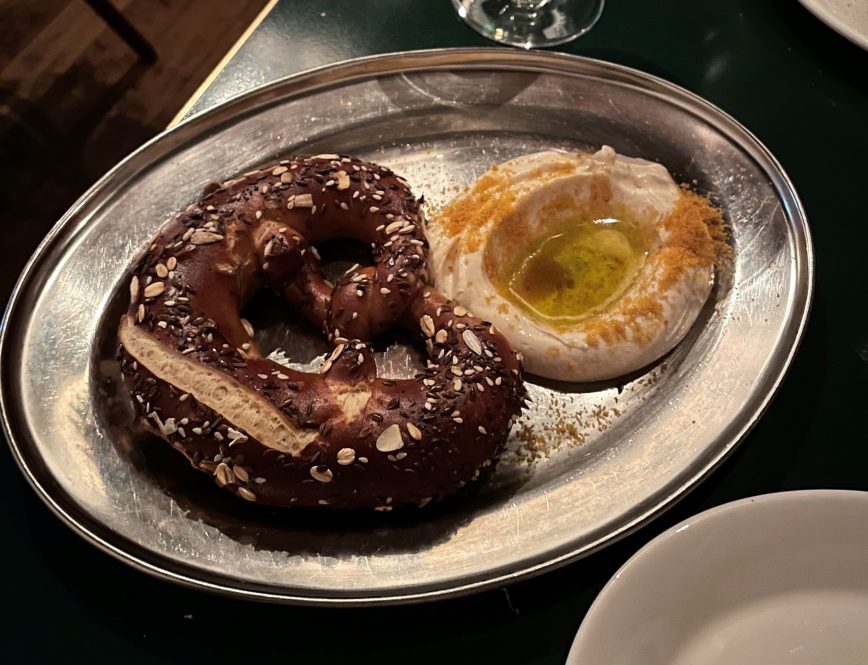
It’s hard to believe 10 William Street has been open for 12 years, but then again, it’s difficult to imagine Paddington — let alone Sydney — without it. The restaurant’s pretzel with whipped bottarga is a must, with a cube of focaccia an essential
add-on to finish the dip. The restaurant was one of the originals when it came to minimising the menu and focusing on quality, not quantity. There are always veg options (oft highlighting the best from Sift Produce), a handful of pastas, seafood
(maybe snapper with spinach and buckwheat) and the stalwart tiramisu. Things are constantly changing over at 10 William Street under Head Chef Francesco Ruggiero, which means diners experience different plates each time they visit. The minimal-intervention wine list evolves as much as the food menu, with the blackboard the place to look for something new and exciting.
Serai
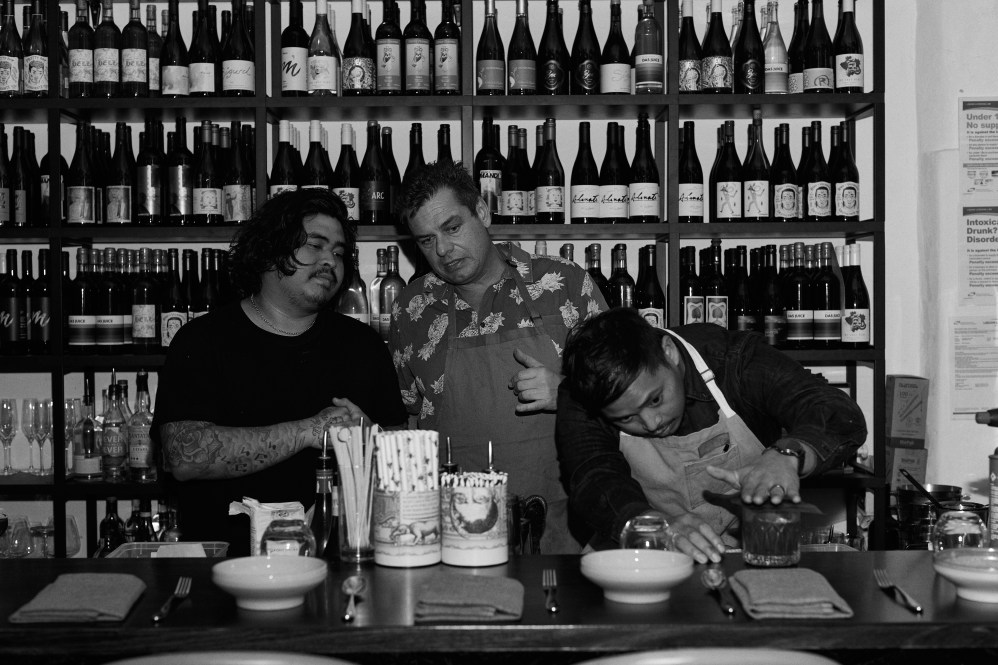
Modern Australian has long been a badge worn by restaurants with underlying European influences. But Serai is emblematic of what the term means in 2022. The Melbourne venue is Ross Magnaye’s first foray into the hospitality business, with the chef teaming up with his business partners to open the wood-fired kitchen in the
CBD. Magnaye’s Filipino-Spanish background is scattered across the menu, but don’t expect dishes to take traditional forms. Sisig sees pig’s head encased in tacos, while kare-kare presents on a hashbrown with salted duck egg and optional uni. A natural wine-centric list is another attractor, with the cocktail list charting drinks that hero everything from house-made calamansicello to ube, single-origin coffee bitters from the Philippines and pandan. Regardless of what you order, it’s a guaranteed good time at Serai.
The Old Fitzroy Hotel
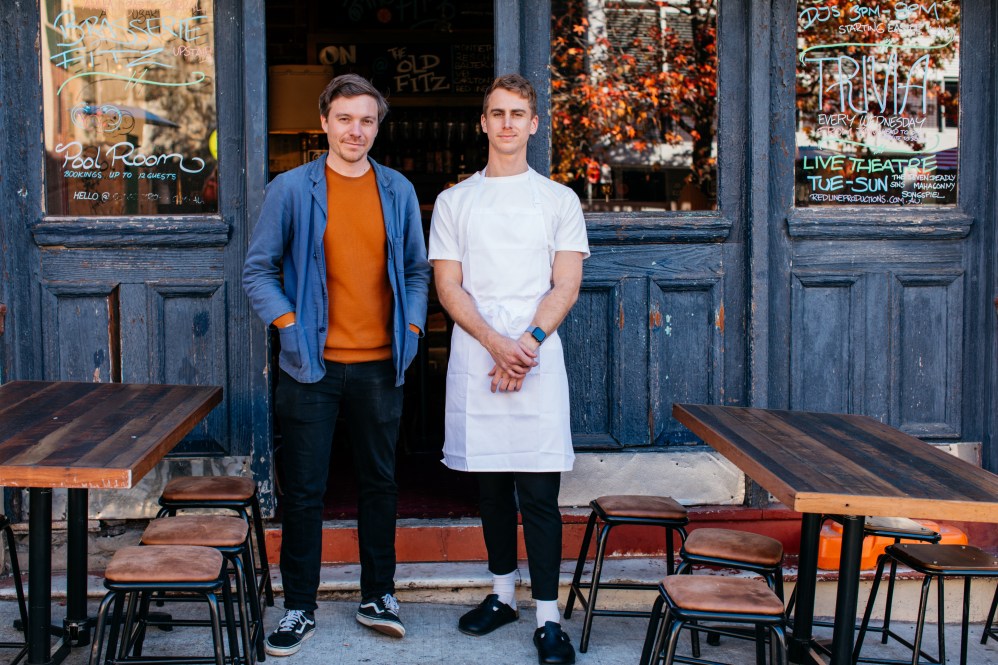
Historic Sydney pub The Old Fitz has seen many chefs pass through its doors over the past 100-odd years, but it has only recently become a launchpad for some of the city’s up-and-coming culinary talents. Odd Culture Group took over the pub in 2020, with Toby Stansfield (ex-Fabbrica) appointed head chef in June after Anna Ugarte-Carral announced her departure. Stansfield has taken on the challenge of running both the pub offering as well as Bistro Fitz, with the chef’s pared-back cooking style in full force across each menu. There’s campanelle with confit garlic, zucchini blossom and burnt chilli oil at the bistro, while rainbow trout is served with different components at the pub and the restaurant — think brown butter or watercress risotto. No pub menu is complete with a burger, and Stansfield’s prawn katsu with iceberg and cocktail sauce certainly does the job.
Club Fontana
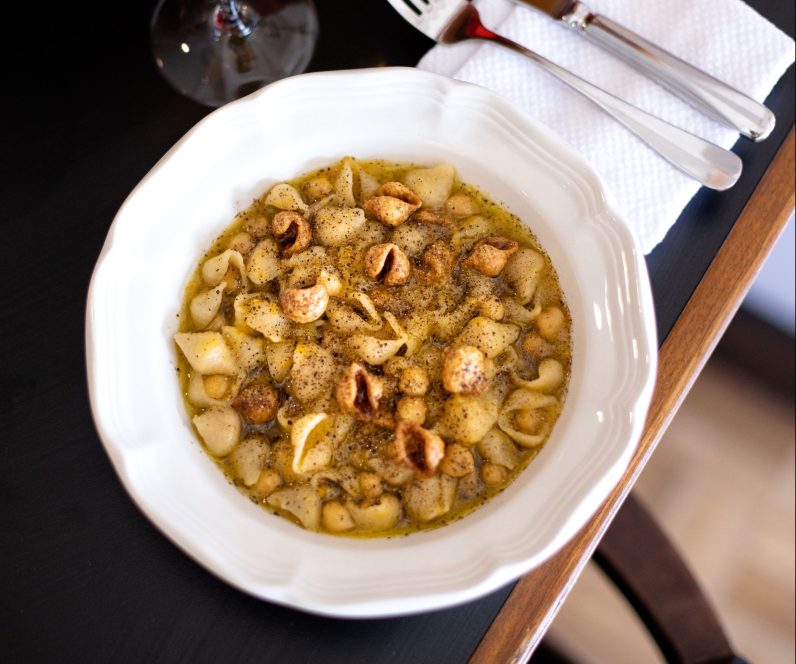
It’s been a jam-packed year of restaurant openings for Sydney, but it’s a lot harder to launch a space that’s a head-turner from the jump. But if anyone could do it, it was the team behind the dearly missed Don Peppino’s consisting of Chefs Harry Levy and Daniel Johnston and Sommelier Ivey Wawn. Club Fontana in Redfern is an Italian leaning restaurant and bar where patrons can dig into sardines on toast, carpaccio di tonno or a plate of spaghetti with prawns and pistachio — the gnocchi is pretty special, too. There’s also room at the bar for those keen to drop by for a glass of minimal-intervention wine and a snack at the good-times restaurant we didn’t know we were missing.
Lucky Kwong
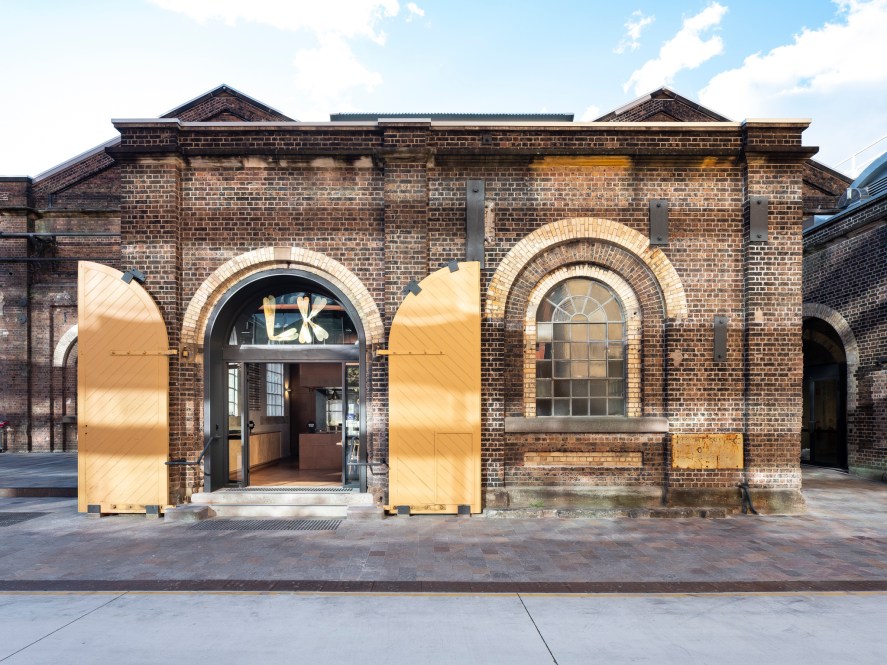
Sydneysiders were beyond thrilled when Kylie Kwong confirmed a new opening in Eveleigh last year, a place described by the chef as a casual eatery for diners to refuel and recharge. It’s a venue that’s as much about the people who run it as the food on the plate, with both coming together to deliver a dining experience that’s both physically and emotionally nourishing. Kwong works closely with Cudgenburra/
Bundjalong man Clarence Slockee, who is the director of Jiwah and the force behind a 500m2 rooftop garden in the precinct. The garden is cared for by Indigenous community members who grow native plants, many of which are found on the menu at Lucky Kwong — peep the native bush mint found in the steamed spanner crab and prawn dumplings. There’s also seafood from Josh Niland’s Fish Butchery, vegetables from Palisa Anderson’s Boon Luck Farm and noodles from Jang’s. Lucky Kwong is all about establishing, amplifying and celebrating community connections, and it’s certainly doing just that.
Restaurant Ka
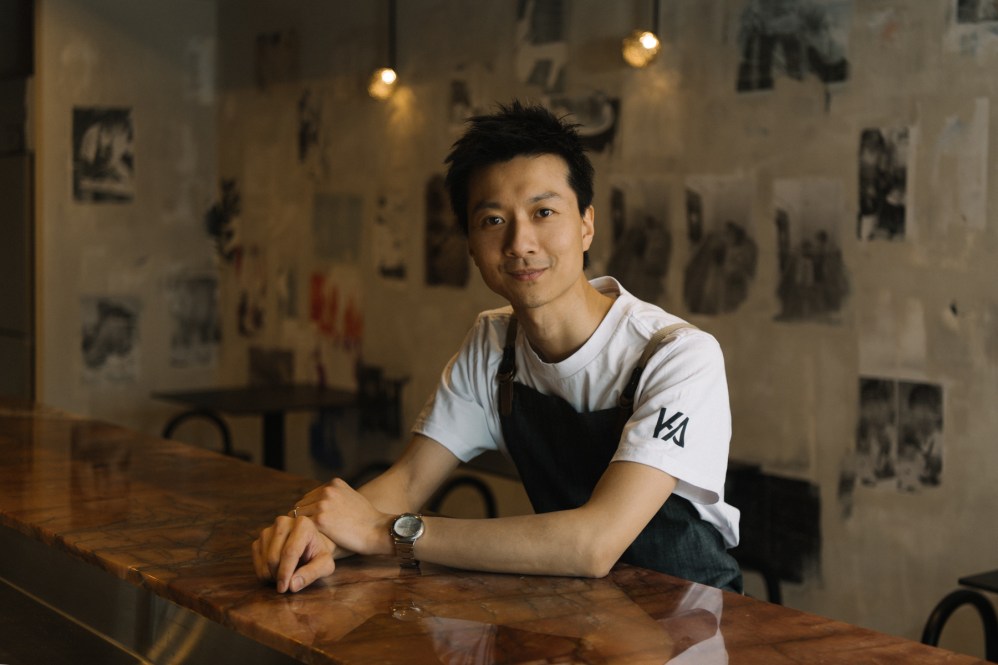
Chef Zac Ng worked in the kitchens of Sepia, XOPP and Flying Fish before opening his first restaurant in Sydney’s Darlinghurst this year. Restaurant Ka is tiny, but mighty, covering just 10 counter spots that encourages some serious face time between chef and guest. Ng is serving an eight-course dinner menu Tuesday to Saturday, with dishes charting Aylesbury Peking duck, trevally and tortellini stuffed with braised Bangalow pork belly so far. Patrons won’t know what they’re eating until they take a seat, which is part of the allure of the Ka dining experience: no expectations, just trust — you’re certainly in good hands.
Aalia
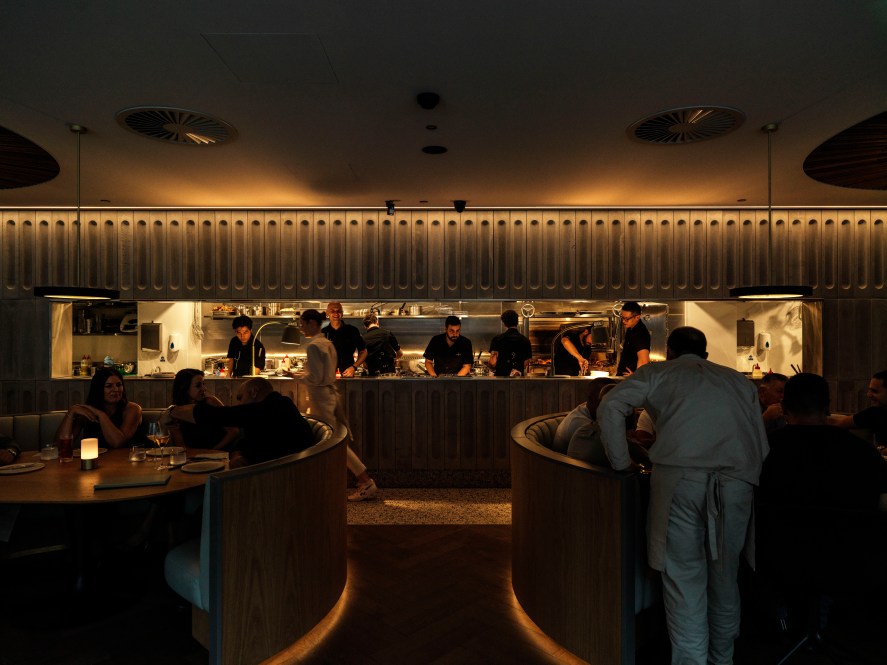
The Esca Group launched Aalia earlier this year with former Fish Butchery talent Paul Farag heading up the kitchen as executive chef. Restaurateurs Ibby Moubadder
and George Farah know how to deliver a quality dining experience (Nour, Lilymu), and Aalia is no different. The luxe Martin Place eatery hones in on Middle Eastern food culture, educating diners on the intricacies of cooking techniques, ingredients and flavour profiles found in Iran, Israel, North Africa, Egypt and Lebanon, to name a few. The menu is vast, but two dishes are not to be overlooked: waraq simsim (sea urchin with aged rice and cumin wrapped in a sesame leaf) and lamb neck shawarma served with tarator, pickles and Saida saj that’s expertly broken down by the front-of-house team. The wine program focuses on Middle Eastern wineries, with Head Sommelier Eleonore Wulf shining a much-overdue light on the historic winemaking region.
Yugen
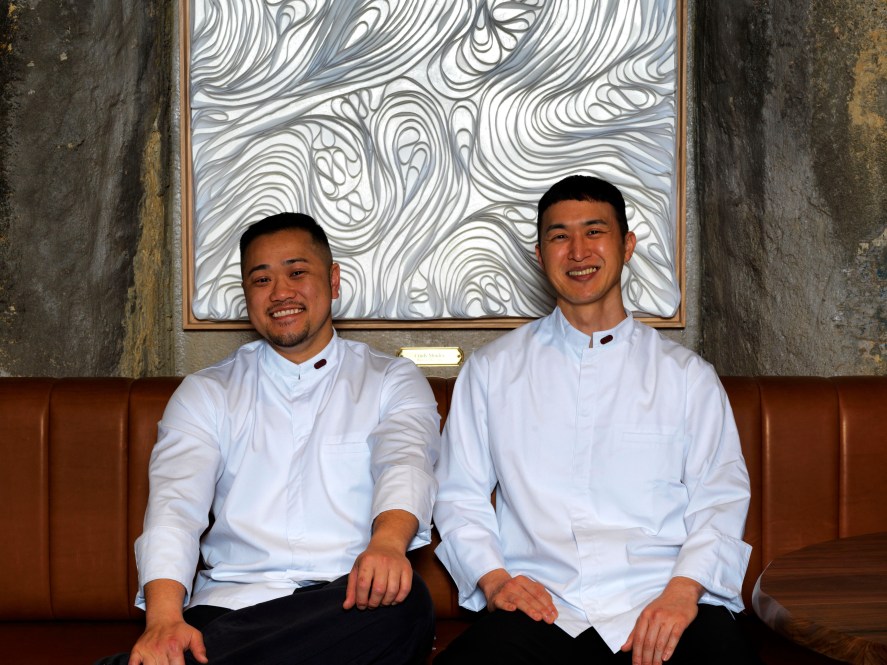
Hospitality certainly wondered where ‘sashimi florist’ Alex Yu would end up when he exited Chase Kojima’s Sokyo after a lengthy tenure, with the prodigy going on to front Yugen in Melbourne’s South Yarra as head chef. The high-glam subterranean restaurant is located inside the Capitol Grand building and is decked out with marble, stone columns, luxe chandeliers and moody accents, making it one of the most beautiful dining rooms to launch this year. The kitchen team is rounded out by Culinary Director Stephen Nairn and former Nobu chef Samuel Chee, who works alongside Yu in the sushi section. Speaking of sushi, Yugen recently announced
the launch of its Yu-manned omakase, which booked out in minutes. There’s no quenching the demand for high-end Japanese food in Melbourne, but Yugen has
raised the bar just two months in.
Parcs
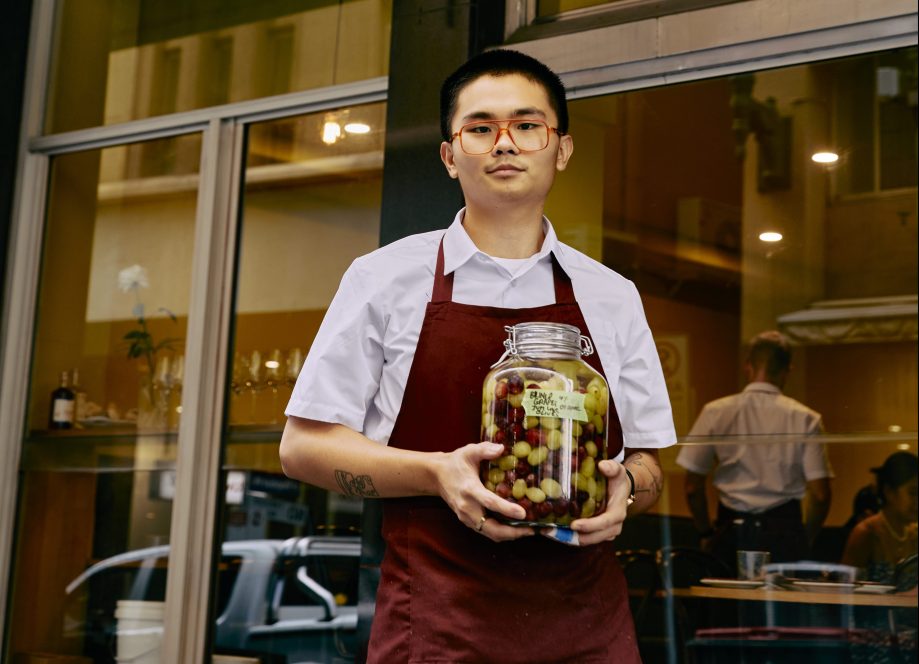
“Scrap is not a dirty word, ferments are the future”, tells you much of what you need to know about Parcs; a casual dining and minimal-intervention wine bar in Melbourne whose name is also a palindrome (of scrap). Dennis Yong heads up the kitchen after time working under Sunda’s Khanh Nguyen, and has put together a menu split into unripe, ripe and very ripe (dessert). Unripe naturally charts house ferments and preserves, Chinese donuts with mustard brassica dip and crocodile bacalao with orange kosho. Ripe covers kangaroo with treacle sauce and preserved beach herbs along with poached flathead with oyster shell beurre blanc and potato in kombucha. Parcs is a walk-in only restaurant (sans bookings for six-plus tables), which means it’s fair game when it comes to snagging a seat. Enjoy some plates with friends and a glass (or a bottle) from the wine list displayed on a chalkboard.
Navi
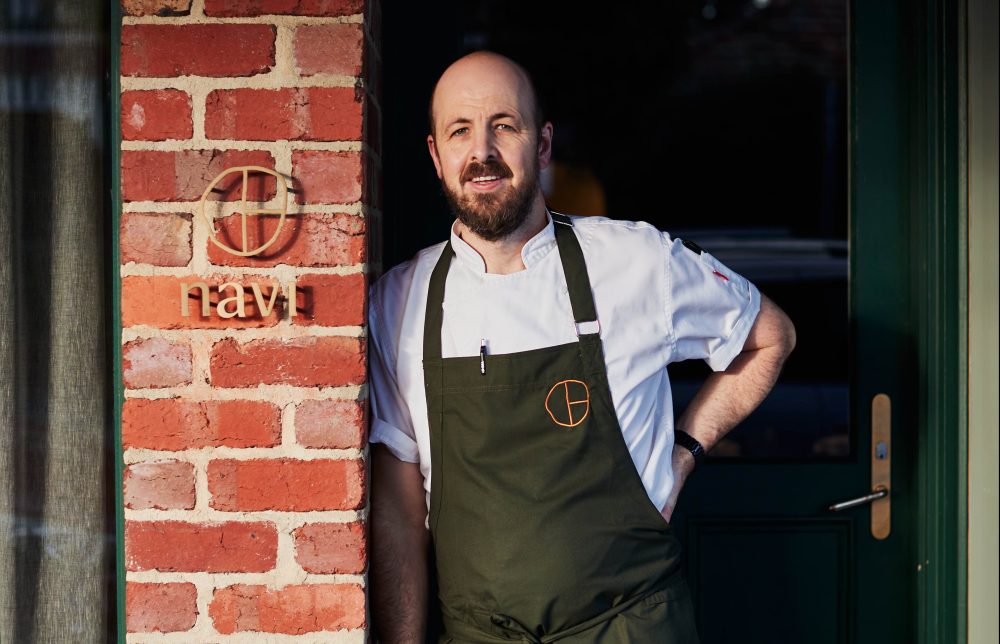
Chef Julian Hills grew up in regional Victoria, completing a Bachelor of Fine Arts (ceramics) before making his way into the kitchen. The chef has spent time learning about native ingredients from Indigenous foragers as well as ethical and sustainable framing practices from local farmers. The considered approach to cooking and eating sets Navi apart, with each dish put up during the degustation paying homage to the provenance of the ingredients, whether it’s kangaroo with nasturtium and egg yolk or spanner crab with radish and earl grey. The fine diner opened in mid-2018 and has recently expanded its presence with Navi Lounge, conveniently located next door. The lounge is a place for locals to drop by for a drink and enjoy a pared-back menu from the Navi kitchen team. But why not do both?
Xi Bay
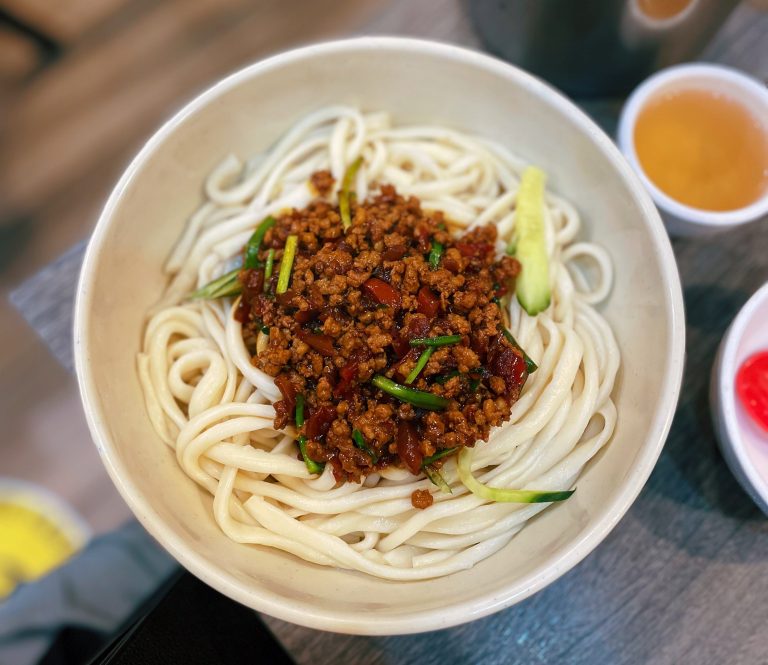
Consistency is key in restaurants, and northwestern Chinese eatery Xi Bay has
certainly nailed the brief. The venue is located on Burwood Road in Sydney and specialises in handmade noodles spanning dry and soup applications as well as a long list of other dishes falling under the pillars of what’s new, cold options, daily meal (dumplings, rice, skewers), vegetables and meat. But you come here for the noodles — and there’s a minimum of 26 options to choose from. Oil-splash noodles are a must, followed by beef soup and roasted lamb, which hero noodles that bounce back when you bite into them. While there’s often a line, it moves fast, and your table will be filled with plates within minutes.
Leonie Upstairs
Hidden Melbourne gem Leonie Upstairs opened with one goal — to feed the neighbourhood it operates within — but word certainly spread fast about the Japanese sake bar and izakaya located behind a door in Hareruya Pantry. Kantaro Okada spearheads the operation, which is a team effort with wife and Chef Hitoe, who designed the menu to complement a vast sake collection that sees 15 options listed at any one time. Leonie Upstairs is the place to expand your sake knowledge and try a flight that might consist of stalwarts ginjo and daiginjo or kijoshu, which is the result of a sped-up fermentation process. Food is split into three categories: snacks, temaki and sweets, with the middle going on to become the signature of the venue. There’s 12 temaki options (including a nightly special) as well as a DIY set where guests can roll their own from a box full of fresh seafood, rice and nori.
Soi 38
Noodle connoisseurs Soi 38 have “lifted a piece of Bangkok” and dropped it in Melbourne’s CBD — a carpark at 38 Mcilwraith Place, to be exact. It’s noodles
for lunch and Thai street food for dinner at the venue, which is known for its tables to fill up fast. Boat noodles are the go for lunch, with bowls of oom kai (spicy chicken herbal soup), tom zap beef and tendon (spicy soup with slow-cooked beef and tendon) and tom zap kra du kaon (spicy soup with slow-cooked pork ribs) rounding out the soup section of the menu. Come nightfall, it’s all about skewers, Thai BBQ and hotpot, larb and a deep-fried whole pork knuckle served with spicy sauce and sweet soy — a perfect match with Soi 38’s collection of natural wines from local producers Das Juice or Thai beer.
Aurora
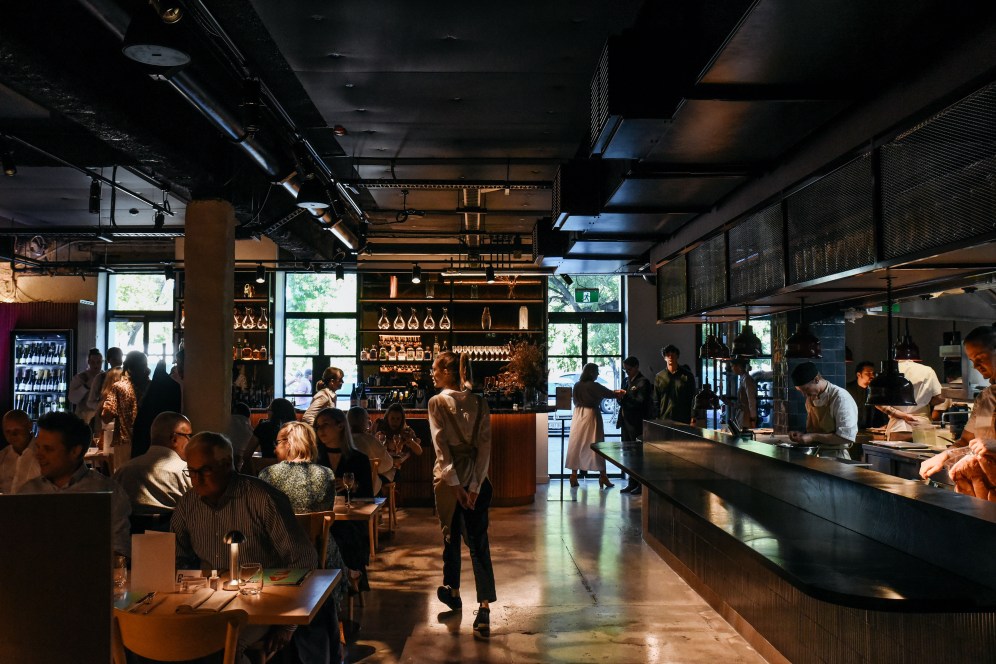
Chef Brendan Wessels leads the team at Aurora, a restaurant located in the heart of
Adelaide. Aurora’s ethos revolves around sustainability and local produce, with both elements illustrated by the plates that leave the pass. Wessels’ South African heritage is found across the menu, which is a collaborative effort with Head Chef Sam Cooper. But the plates at Aurora are far-reaching when it comes to specific culinary influences. Cone Bay barramundi is paired with tabbouleh, fetta and shallots, while market beef comes with chimichurri and wattle seed mustard. Aurora is also part of Light ADL, a not-for-profit human enterprise. All profits from Aurora are funnelled back into the charity, which supports and provides opportunities to artists.
Rebel Rebel
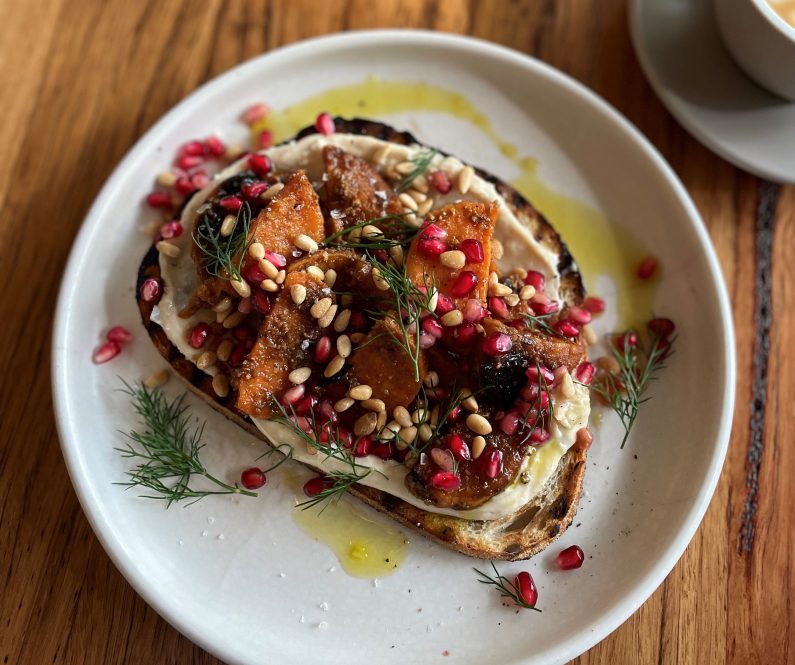
You know you’re in for a treat when there’s a pig statue at the door, and that’s exactly what you will find when you walk into Canberra’s Rebel Rebel. The timber-beamed ceiling, black walls and open kitchen are other giveaways at the eatery run by Chef Sean McConnell and his wife Jenny Harders. Rebel Rebel serves lunch and dinner Wednesday to Sunday as well as breakfast on weekends, which offers a menu that goes beyond eggs on toast (but don’t worry, they’re on the menu “how you like ’em”). The offering is the same for lunch and dinner service, and sees Wagyu tongue served with peppers; beef tartare with anchovies, pickles and hot English mustard and grilled prawns with bay leaf butter. The wine list is unrivalled here, covering mostly local makers as well as pink, orange, white, red and fizz from France, Italy, Spain and
beyond.
Le Rebelle
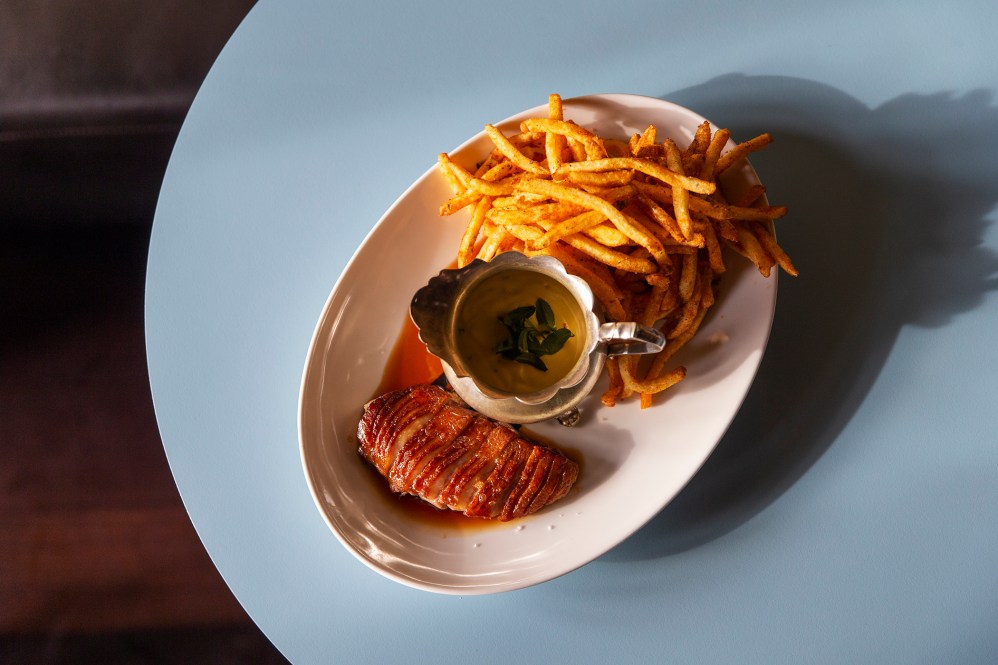
A French neighbourhood bistro and bar in Mount Lawley, Perth? Sign us up. Le Rebelle covers a bistro, wine bar and dining room and offers a menu that’s a little bit French and a little bit New York. Coined as “the kind of place you would dine at in the old world”, Le Rebelle is also the kind of place you want to spend a lot of time in and is a credit to Owners Liam and Sarah Atkinson. Dishes include crab toast, glazed Wagin duck frites, a Wagyu burger stuffed with Beaufort cheese and pickled mussels served with potato rosti and saffron rouille. It’s perfect eating with a bottle from the snappy wine list, a classic cocktail or a glass of beer.
Agnes
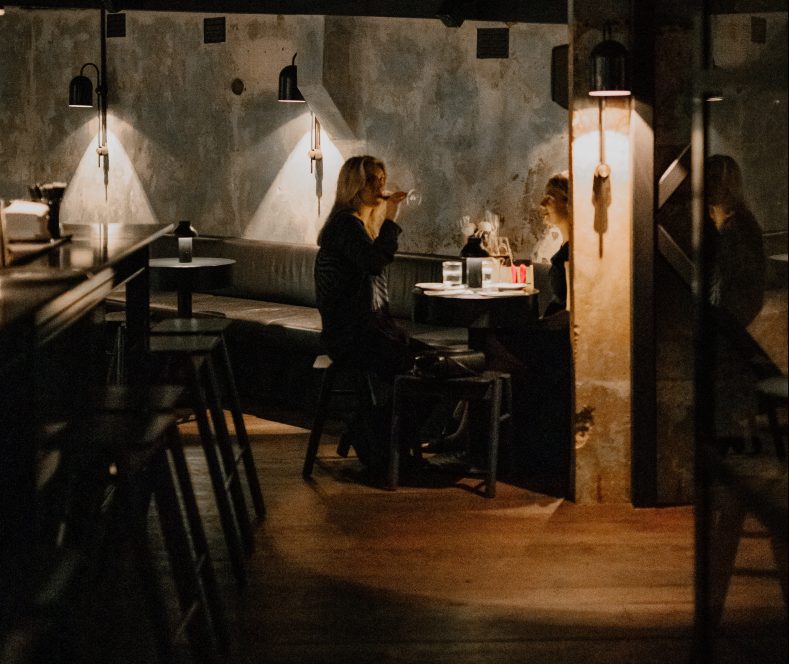
A restaurant’s ambiance is just as important as its menu, and Agnes in Brisbane’s Fortitude Valley ticks both boxes. The fine diner is the brainchild of Tyron Simon, Bianca Marchi and Executive Chef Ben Williamson, who have contributed something special to the city’s booming hospitality scene. Agnes is a celebration of ancient cooking practices, with the kitchen team using wood-fired hearths as opposed to stovetops. The converted warehouse space has a dry-ageing room, cellar and terrace bar that encase the main dining area, providing an immersive experience for locals and diners from afar.
Dier Makr
Chef Kobi Ruzicka worked in the kitchens of the now-closed Relae in Copenhagen and In de Wulf in Belgium before he opened Dier Makr in Hobart with Sarah Fitzsimmons. Thursday to Saturday, guests are presented with a menu that lists six or so dishes made with hyper-seasonal ingredients. It’s a test of skill for Ruzicka, who practices fermentation and slow cooking to create options that go hand in hand with wine pairings from neighbouring bar Lucinda. Dishes are on until they’re not, with recent examples covering grilled white asparagus with black lip abalone and hazelnuts as well as confit gummy shark with grilled nameko, lion’s mane and buckwheat sauce.
Ante
Black Market Sake’s Matt Young and former Pinbone chef Jemma Whiteman launched Ante at the start of the year, and it fast become a local favourite in Sydney’s Inner West. The Newtown venue’s sleek interiors and extensive vinyl library are reminiscent of a Japanese bar, which goes hand in hand with its sake-centric offering. Ante’s range is made up of 65 sakes from 21 breweries across Japan. The food offering takes its cues from Japanese flavours and is designed to complement a guest’s sake of choice. Dishes include tagliatelle with fermented shiitake mushrooms and coral trout with tsukune and bottarga. There is arguably no better combination than sake, music and snacks, and Ante has hit the trifecta.
Arkhé
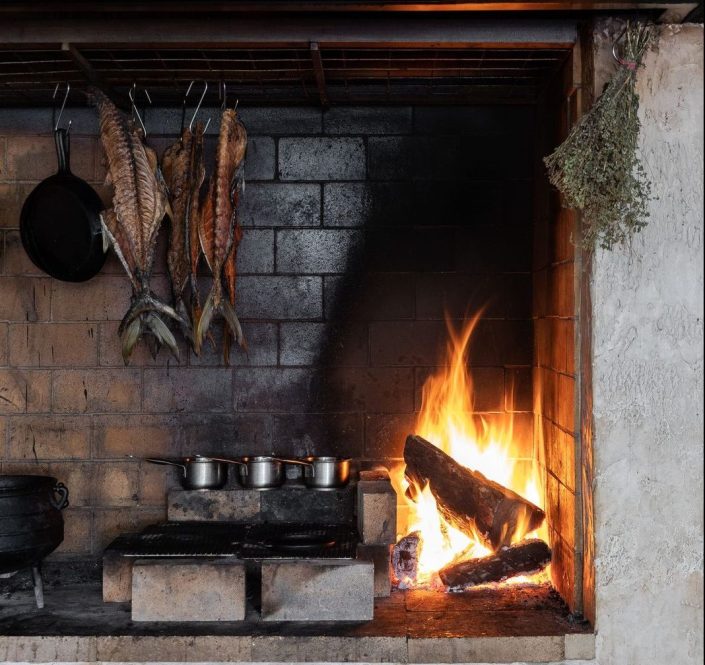
There was much anticipation around the launch of Jake Kellie’s first solo venture Arkhé. After the chef headlined pop-ups around the country, he teamed up with Palmer Hospitality to bring Arhké to life. The 160-seat restaurant has since settled into Norwood, South Australia, and is delivering the country’s first open-flame dining experience. Its barbeque offering draws inspiration from Kellie’s time at Dave Pynt’s Michelin-starred restaurant Burnt Ends in Singapore. Guests can enjoy a cocktail at the bar before moving into the main dining area or chef’s table, where an open-plan kitchen allows diners to observe how the team cooks over an open hearth. It’s definitely a sight to be seen.
Pellegrino 2000
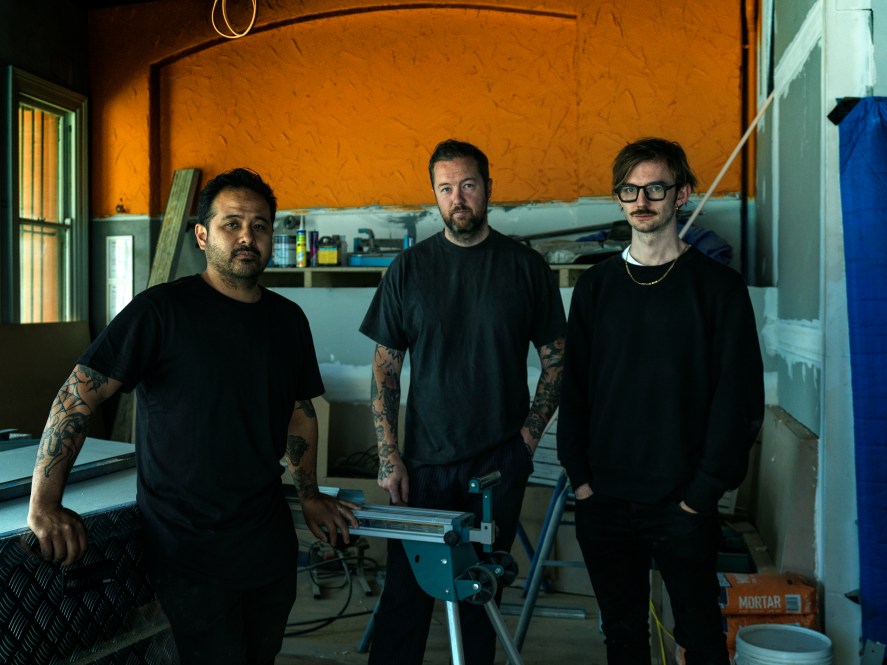
The trio behind French restaurant Bistro 916 in Sydney’s Potts Point delved into Italian cuisine earlier this year with the launch of their second venue Pellegrino 2000 in Surry Hills. Chefs Daniel Pepperell and Michael Clift helm the kitchen, with Sommelier Andy Tyson covering the drinks and front of house at the neighbourhood trattoria. The menu draws inspiration from Rome and Florence with standout dishes championing tripe and offal. There is plenty of pasta on the menu including a classic vongole along with pappardelle with lamb shoulder ragu. A busy venue is always a good sign, and Pellegrino 2000 often has a long line that snakes around the corner. It’s been a busy year for the team, who will open a New York-inspired seafood grill and steakhouse in the CBD come February 2023.
Aru
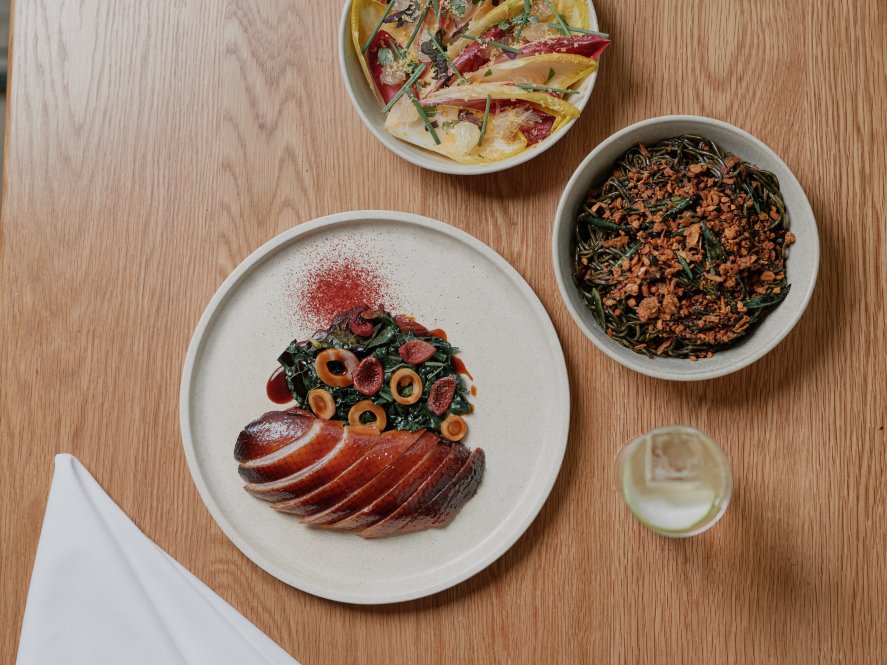
Sunda Executive Chef Khanh Nguyen opened the doors to his second restaurant Aru with Adipoetra Halim on Melbourne’s Little Collins Street in 2021. Aru is a self-described modern Australian restaurant, with the fine diner pulling inspiration from the wider Australasian region. The kitchen team takes a DIY approach to cooking, breaking down whole animals, cooking over open flames, curing, fermenting and preserving in-house. Native Australian ingredients are combined with traditional Asian elements, resulting in nuanced dishes that reflect various cultures. Nguyen is highlighting the history of seafarers who journeyed the Sino- Indonesian-Australian route at Aru, leading to a culinary approach that centres around a vast plethora of flavours.
Bar Rochford
Located in Canberra’s historic Melbourne Building, Bar Rochford has become known as the city’s hub for good food and top-tier drinks. Owner and General Manager Nick Smith opened the doors in 2016, with the venue earning a hat just three years later. Its revolving seasonal menu, curated by chef team Josh Lundy and Belinda Barrett, covers a range of snacks, pastas, vegetable-driven dishes, desserts and cheeses. There are more than 120 wines listed on the beverage menu along with 20 by-the-glass options and an extensive selection of cocktails. Bar Rochford has stirred up plenty of interest across the country and is rightly considered one of Canberra’s go-to destinations.
Ca Com Banh Mi Bar
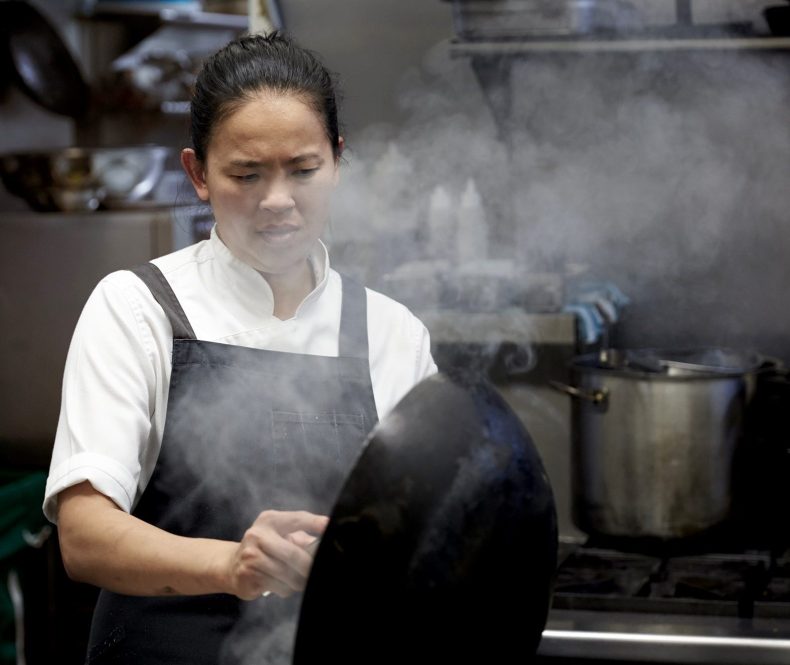
Anchovy Melbourne’s spin-off banh mi offering boomed during lockdown, and the concept fast made it official. Chef Thi Le and partner Jia-Yen Lee started selling banh mi out of the window of Anchovy to keep themselves occupied while it was closed for dine-in service, before turning the space next door into Ca Com headquarters. Ca Com churns out a rotating selection of banh mi that sees ingredients packed into house-baked rolls. Le utilises various meat cuts and experiments with different cooking techniques to create her own iterations of the Vietnamese staple, which cover turmeric chicken, jungle-spiced pork sausage and Manchurian pumpkin.
Doom Juice
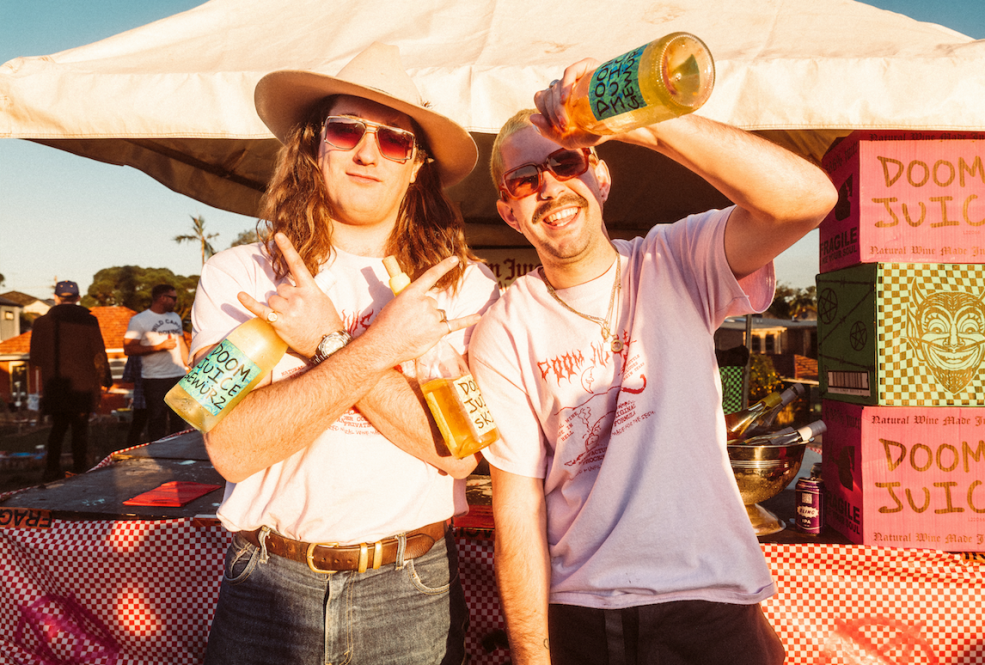
Sydney natural winemakers Doom Juice came onto the scene during lockdown 2020 before going on to open the Inner West’s first cellar door. Owners Sebastian Keys and Zachary Godbolt are now making waves at the St Peters site with a courtyard restaurant and bar called St Lawrence Bistro. The weekly pop-up is held each Sunday with a different chef taking over the kitchen. The Old Fitzroy’s Toby Stansfield, Sagra’s Ed Saxton and Bastardo’s Jack Fitzhenry have graced the kitchen with menus that reflect their own unique culinary styles. There are plenty more events in the works, so keep an eye on the venue’s Instagram to see who’s cooking next.
Entrecôte
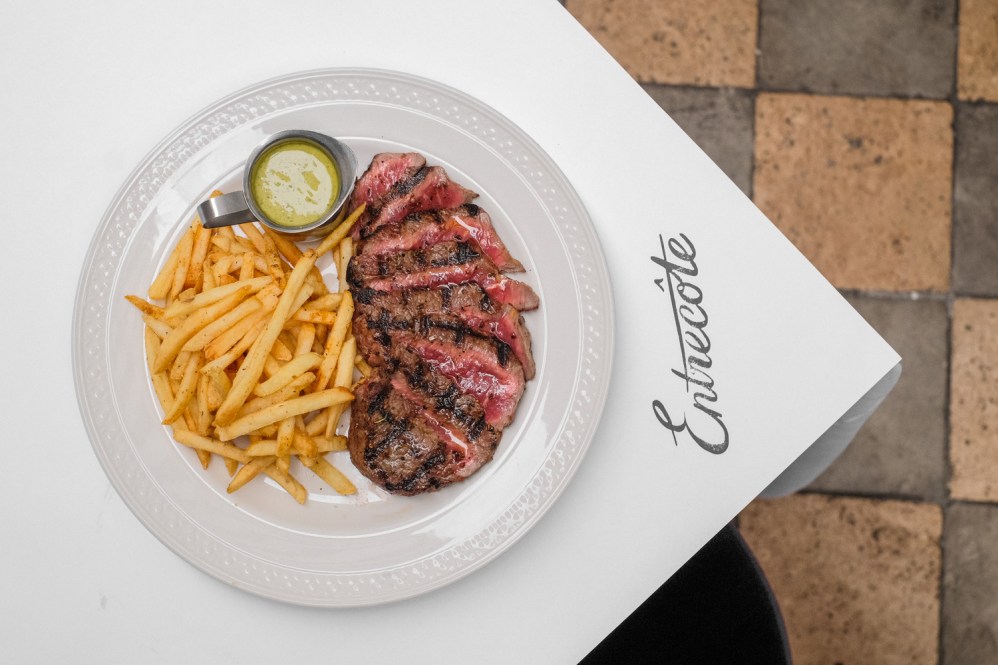
Melbourne’s Entrecôte pays homage to Parisian brasseries via its luxe décor and classic French fare. The restaurant spent seven years at its South Yarra site before moving to Prahran in 2021. Owner Jason McLaren Jones couldn’t be happier with the location change, and the local favourite continues to thrive in its new digs. The multi-level site encompasses a terrace, main dining room and courtyard, with each space designed to reflect the energy of Paris. French-inspired cocktails have been curated by Romeo Lane’s Joe Jones, which are an added bonus to Head Chef Tim Menger’s menu, which includes the not-to-be-missed steak frites. Entrecôte has certainly settled into its new home and continues to deliver high-quality French cuisine.
Essa
Chef Phil Marchant showcases the work of local farmers, providores and hunters at his 60-seat restaurant Essa in Brisbane’s Fortitude Valley. The kitchen is constantly changing its menu, with dishes dictated by the seasons and consciously sourced produce. The approach certainly broadens Marchant’s creative scope, with the co-owner focused on developing unique flavour combinations for guests. Examples include fried chickpea beignets with caramelised scallop cream and kaffir lime; burnt and baked salt-crusted kohlrabi with pepita pesto and raw kingfish with hazelnut
miso, caper leaf and salted bergamot. The dishes scratch the surface of an inventive and ever-evolving menu that never ceases to surprise guests.
Figlia
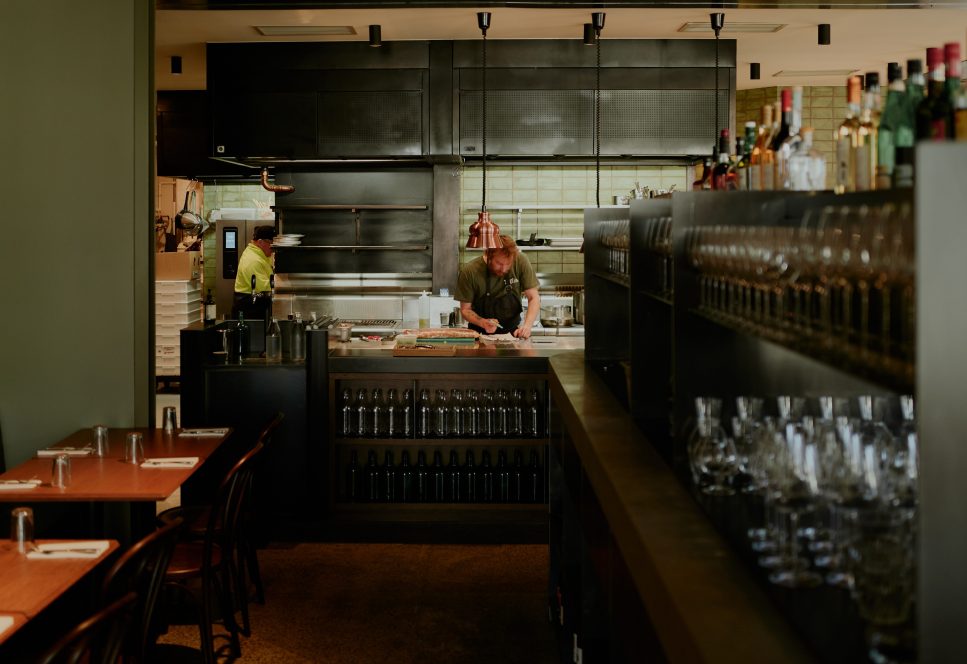
The Brunswick East location is the third venue from the team behind Melbourne’s Tipo 00 and Osteria Ilaria. Co-Owner Luke Skidmore and Chefs Alberto Fava and Andreas Papadakis chose to centre the industrial-style eatery around one of life’s great pleasures — pizza. But Figlia isn’t serving your typical margherita. Instead, toppings include duck mortadella, fermented cabbage and Moreton Bay bug. The food offering also encompasses antipasti dishes, stuzzichini (appetisers), mains, sides and desserts. While it may be a more pared-back and casual experience compared to the team’s other restaurants, the pizzeria delivers the same high-impact flavours and quality the trio are renowned for.
Freyja
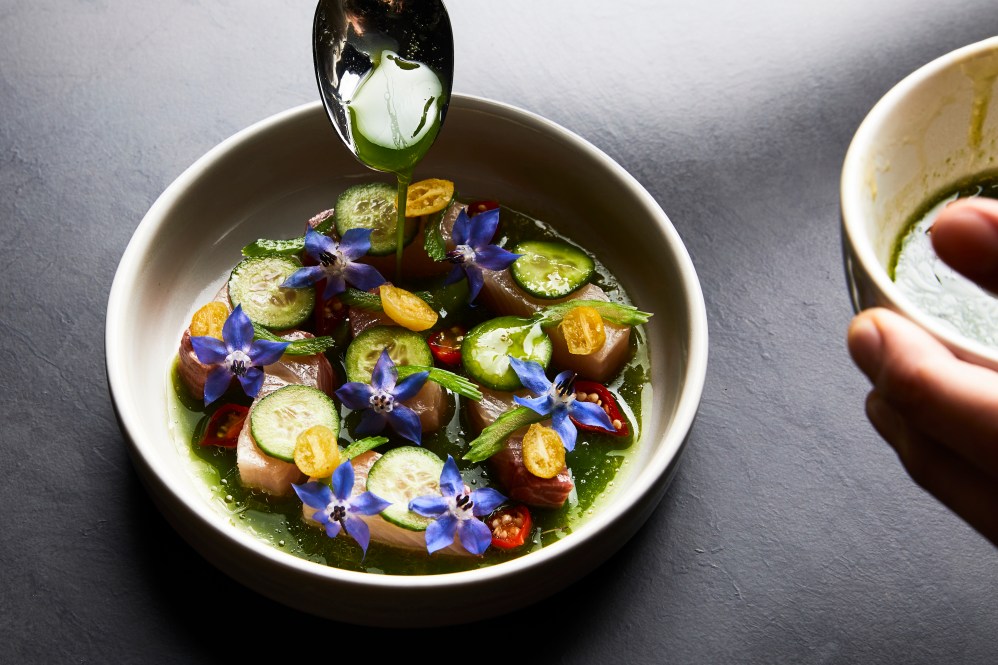
Freyja moved into Melbourne’s heritage-listed Olderfleet building in June this year, occupying two levels of the landmark site. The restaurant takes a new Nordic approach to modern Australian dining, marking it as a concept that is taking its own path. Head Chef Jae Bang relocated from Norway after time at Michelin-starred restaurant Re-Naa in Stavanger to run the kitchen and has been an unstoppable force. Bang is working with fellow Re-Naa alum Aaron Caccia to present contemporary dishes made with traditional techniques such as pickling, curing, smoking, preserving and lacto fermenting. A restaurant is only as good as its people, and Freyja certainly has a dream team.
Gildas
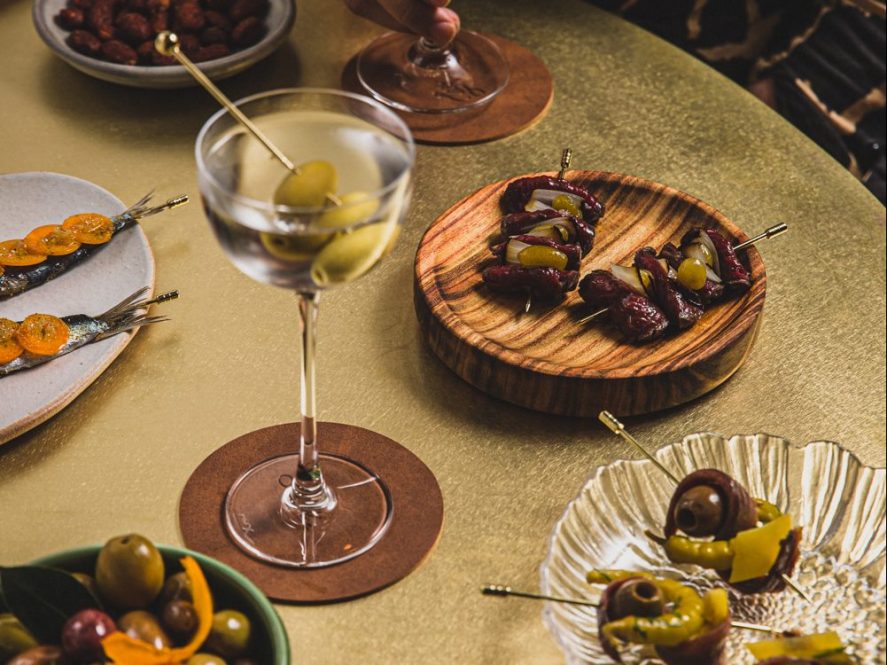
Firedoor’s Lennox Hastie is taking diners to the Basque region with his most recent venture Gildas. Located down the road from Firedoor, the venue is an ode to one
of the most iconic pintxos which sees an olive, a guindilla pepper and an anchovy speared together. Of course, there are many other dishes to get around on the menu, all of which showcase the finest produce of Australia and the Basque region. In the true spirit of local Spanish tavernas, Gildas encourages diners to delve into the wine and beverage selection as much as the food. A martini, please!
Gimlet

Andrew McConnell’s Gimlet at Cavendish House in Melbourne showed the world the art of Australian hospitality this year, with the dining room snagging the no.84 position on the 2022 World’s 50 Best Restaurants list. Executive Chef Colin Mainds leads the kitchen, and has taken an immersive approach to the menu. A standout dish is the tableside tartare, which sees front-of-house staff compile the dish in front of diners. Cocktails are a key part of what makes Gimlet so special, with Bar Manager Cameron Parish constantly switching out drinks in line with seasonality. The stellar wine list from Beverage Director Leanne Altmann is the cherry on top, making the Gimlet brigade a force to be reckoned with. A spin-off Gimlet bar is also in the works — stay tuned.
Labart
Chef Alex Munoz Labart and his wife Karla Munoz Labart opened their namesake venue in Burleigh Heads with one goal: to serve dishes made from the best Australian produce. Alex worked as head chef at Sydney’s Monopole before making the move up north, where he is championing seasonality and simplicity with an ever-changing streamlined menu. The chef is upping the ante when it comes to regional dining and is continuing to make his mark on the local dining scene with wine bar Paloma, which is all about elevated snacks and stellar wines.
Fico
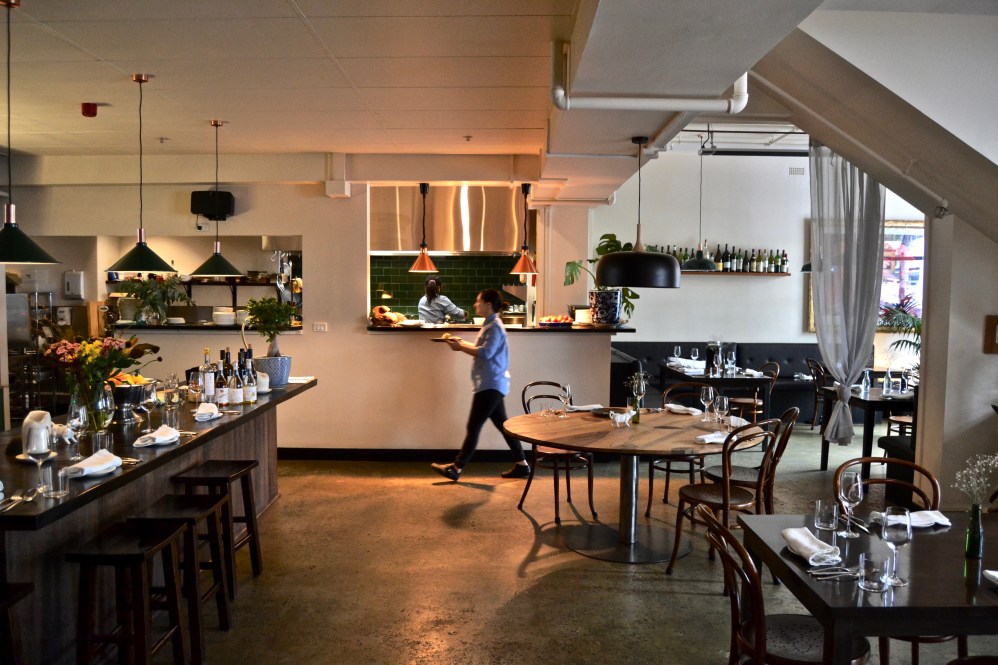
The pasta bar in Hobart opens reservations one month in advance — so consider this a reminder to snag a table. Fico has been around since 2016, with owners and chefs Federica Andrisani and Oskar Rossi combining Italian and Japanese influences at their restaurant since the start. The menu is sustained by local and seasonal produce, but there’s no sample menu to cast an eye over before you dine. Instead, guests are encouraged to sit back and relax in the same vein as the European custom, which implores an open-minded attitude. But if you must, Instagram is a good place to go to see past dishes, which include Bass Strait scallops with quark, horseradish and brown butter and tortello with a liquid tomato centre, basil and buffalo mozzarella cream. Fico is big on wine, securing several awards for its list that heroes Tasmanian winemakers and global styles.
Leigh Street Wine Room
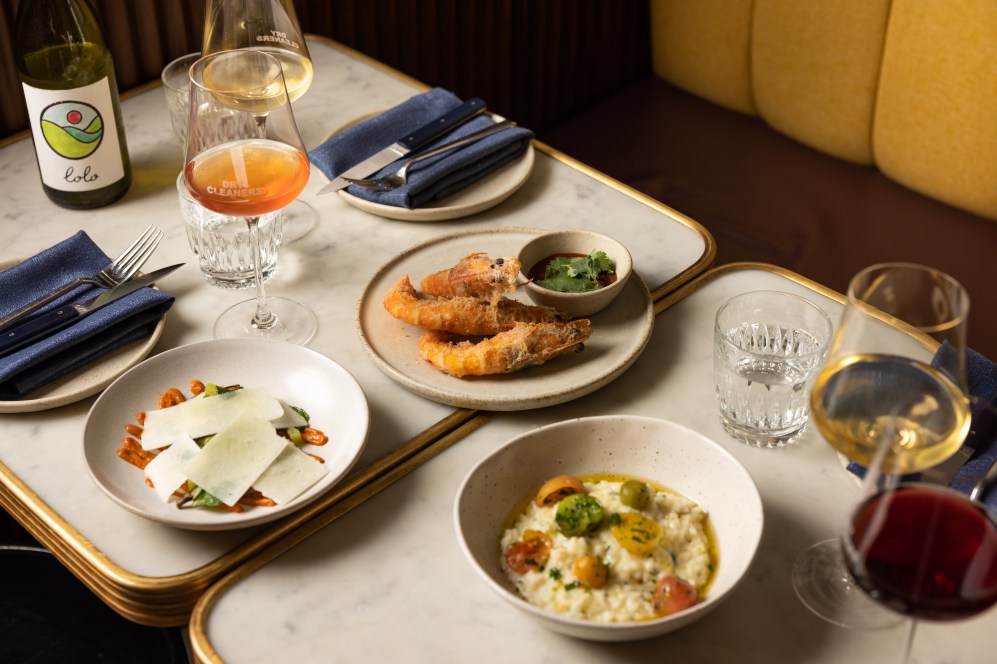
Adelaide wine bar Leigh Street Wine Room is brought to you by one of the city’s leading hospitality groups Another Kind which is the work of Creative Director James Spreadbury and General Manager Meira Harel. What makes Leigh Street Wine Room so great goes beyond the 400-strong list of minimal-intervention wines and extends to its award-winning interiors and expert team of staff. Not to skip on the menu, which charts everything from gnocchi fritti and tempura prawns to eggplant parmigiana. Leigh Street’s ethos is centred around good food and wine, and the venue has firmly established itself as one of Adelaide’s must-visit spots.
Restaurant Leo
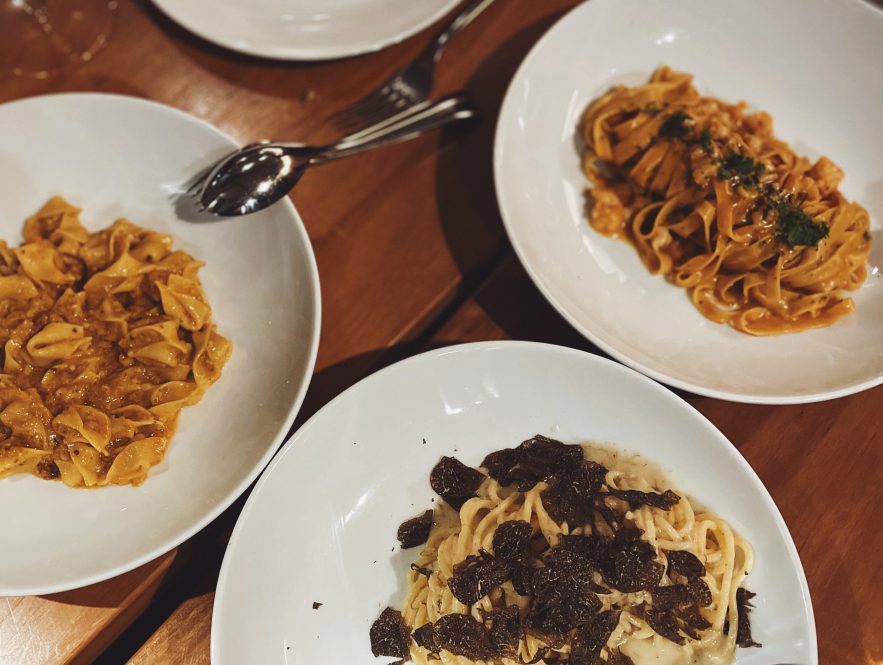
Dynamo chef team Federico Zanellato and Karl Firla opened Restaurant Leo together in 2020, with spin-off café Picco Leo also joining the Angel Place dining precinct in Sydney’s CBD. The Italian-leaning menu spotlights humble comfort food found along the coast with its lobster maccheroncini and cuttlefish risotto fast achieving signature dish status. Handmade pasta is a core part of the Leo experience, with chefs making a realm of shapes from scratch every day. Practice makes perfect, and Leo has continued to evolve over its two-year life, plating everything from Sardinian fregola with mussels, vongole, hapuka and tomato to culurgiones with cime di rapa.
Same Same
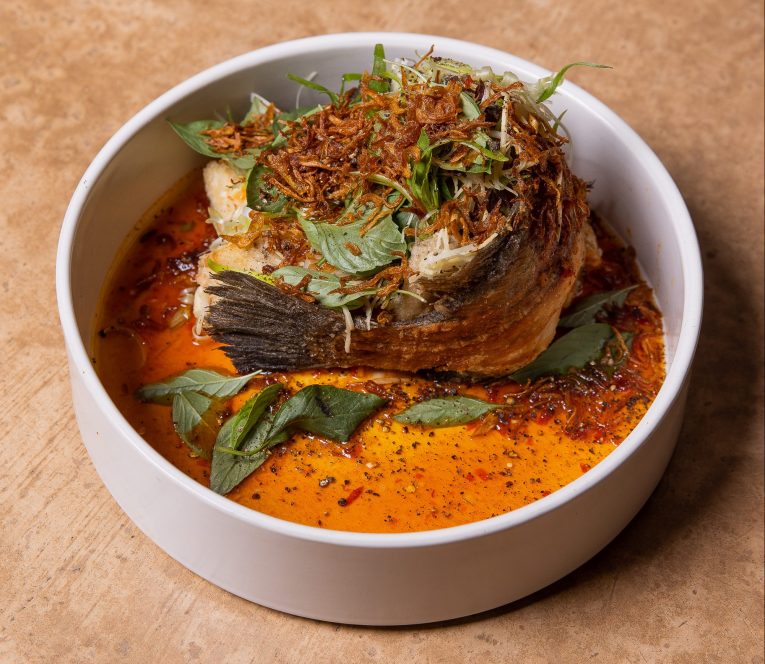
Same Same comes to you from the crack team behind Agnes, also located in Brisbane’s Fortitude Valley. Head Chef Jason Margaritis channels the diversity of Thai cookery on his menu, which sees classic dishes cooked over coals or in the wok. Betel leaf with eggplant, pomelo, fragrant chilli, cashew and mint is an essential snack, followed by the salt and pepper tofu burger with cabbage slaw and the boneless whole fried market fish with sweet four-chilli dressing, spring onions, ginger, Thai basil and coriander. The concept has been a fitting addition to the area’s dining precinct Ada Lane, which has become a hotspot thanks to its quality eateries and buzzy atmosphere.
The Hardware Club
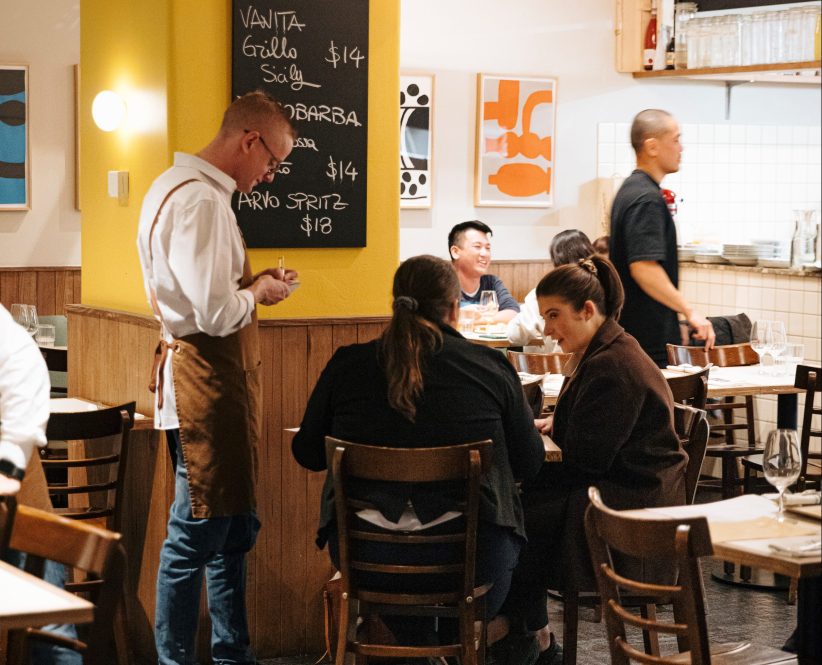
Among the fleet of restaurants in Melbourne’s Hardware Lane sits The Hardware Club. Chef and Co-Owner Nicola Dusi and Andrea Ceriani opened the ’80s trattoria-style eatery in 2019, with the venue becoming a go-to for Northern Italian cuisine. The pair focus on handcrafted pizza, pasta and comfort food along with dishes from Dusi’s hometown of Valpolicella in Verona, Italy. Diners can expect the unexpected: think a deep-fried cacio e pepe toastie or roasted marrow bone toast with salsa verde. The playful menu rewrites tradition, which is part of the charm — not to forget the house-made limoncello.
Hubert
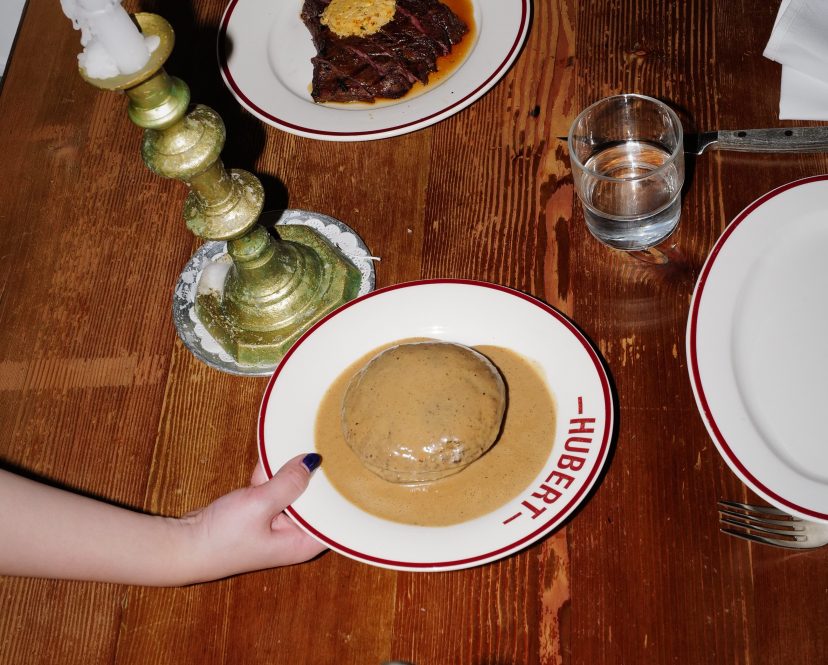
Swillhouse’s Restaurant Hubert celebrates the finer things in life — think martinis, oysters, wine and smooth jazz. The underground Sydney CBD venue encompasses a large main dining area, bar, two private dining rooms and a main stage that hosts regular live music acts. It encapsulates the essence of Parisian bistros with the kitchen combining old and new cooking techniques and plating up dishes such as XO escargot, kimchi gratin, beef tartare and duck parfait. Not to forgo the long list of classic cocktails and wines which are in line with the timeless vibe. Hubert has been open for more than six years now, and the restaurant feels as relevant as ever.
Vasse Felix
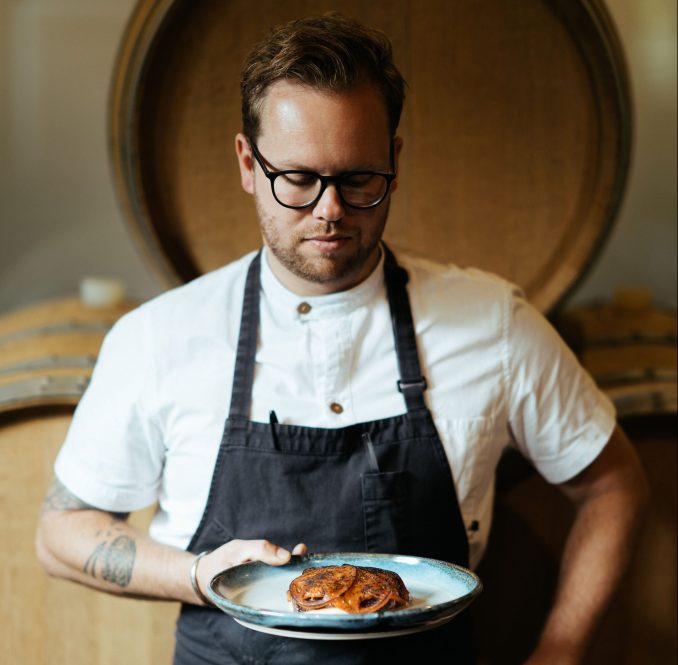
Western Australia’s premiere winery Vasse Felix has received much acclaim for its drops over the past 55 years, so it’s no surprise the estate’s hatted restaurant is held in equal regard. Head Chef Brendan Pratt jumped on board in 2017 after working in Michelin-starred establishments overseas and has made the restaurant his own over the past five years. Pratt has drawn inspiration from Vasse Felix’s award-winning wine portfolio to create the menu, which combines technical skills with produce sourced from the Margaret River. A visit to the winery isn’t complete without dropping into the restaurant, with the two experiences making for one memorable trip.
Van Bone
Van Bone celebrates Tasmania’s rich natural landscape through its small-scale culinary approach. Executive Chef Timothy Hardy, Restaurant Manager Laura Stucken and Garden Manager Joe Nalder had a vision to create an experience that would highlight local produce from the land and sea of Marion Bay — and the trio have done just that. Van Bone’s degustation menu covers 14 dishes which are based on the fruits of the restaurant’s market garden, which was designed by Hannah Moloney from Good Life Permaculture. Hardy works closely with Head Gardener Stuart Rose to plan the season’s harvest to sustain the 20-seat fine diner. It’s a labour of love for the team, who have taken the notion of provenance and locality to heart.
Kobo
Jacob Lee is the chef behind Sydney bapsang omakase concept Kobo, which stands for Korean bohemian. The pint-sized venue is the story of Lee’s life, with the chef referencing the Jeolla Province in Korea where his parents grew up and the time he spent with his grandmother, who taught him how to make sauces, pastes and ferments from scratch, as key influences. Kobo is an eight-seat restaurant without rules, with Lee designing menus — which he refers to as episodes — based on specific life events. Courses straddle traditional territory as well as others crafted with Japanese ingredients and local produce. The beverages are largely Korean, with camelia flower rice wine from Jeju Island served in a golden cup as a welcome drink, which is just the start of the many good things to follow.
Restaurant Botanic
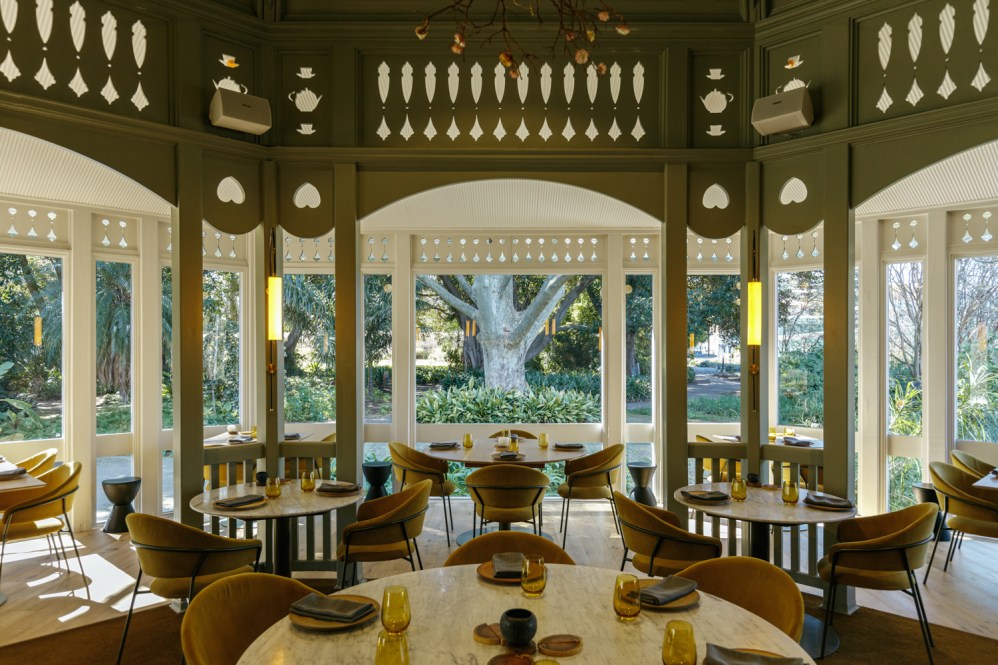
There is a certain charm that comes with dining outdoors when a backdrop of flora and greenery is involved. Restaurant Botanic is found inside the scenic Adelaide Botanic Garden and provides guests with the opportunity to take in all the elements. Head Chef Justin James presents a tasting menu with more than 20 different flavour combinations that reflect the best of what South Australia has to offer from marron and green ants to finger lime and bunya bunya branches. The restaurant offers three different beverage pairings, which allow diners to choose their own adventure during the four-hour dining session.
The Summertown Aristologist
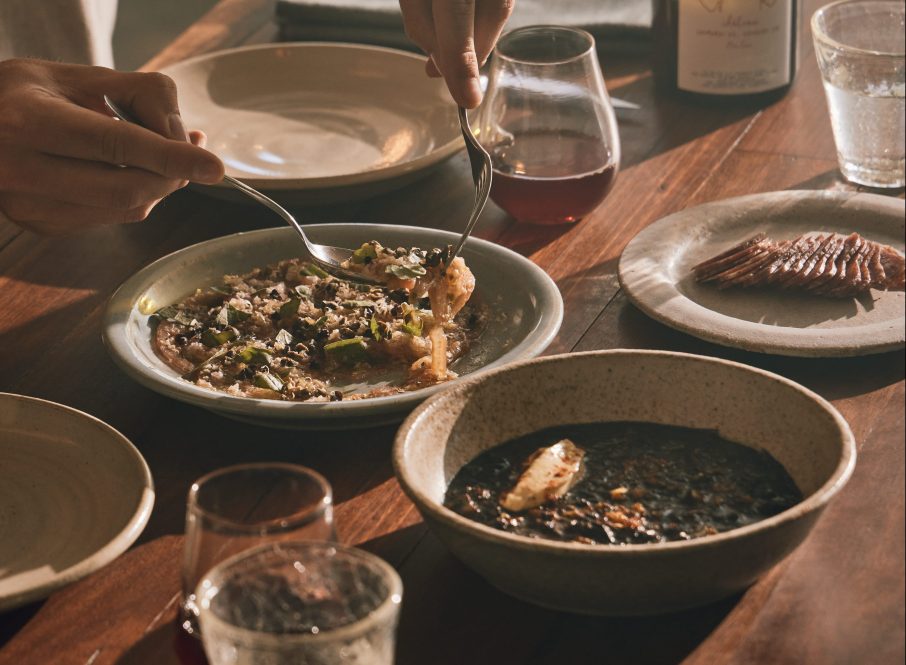
Winemakers Anton van Klopper (Lucy Margaux wines) and Jasper Button (Commune of Buttons) teamed up with former Orana manager Aaron Fenwick in 2016 to launch The Summertown Aristologist in Summertown in the Adelaide Hills region. What started as a canvas to showcase some of South Australia’s best wines has since evolved into a community-based venture. A rotating menu sees chef team Tom Campbell and Ethan Edie utilise sustainable seafood and ethically sourced meats from Adelaide farmers along with produce from the venue’s garden located in Basket Range. The kitchen takes a hands-on approach, and makes everything from charcuterie to butter in-house.
Sponsored Content

Discover Dairy Farmers’ range of shredded cheese
Sponsored by Bega

Beachfront Melbourne Club catering & restaurant opportunity
Sponsored by Future Food
Trending Now
Resources
Lorem ipsum dolor sit amet, consectetur adipiscing elit. Fusce ac ornare lectus. Sed bibendum lobortis...
Lorem ipsum dolor sit amet, consectetur adipiscing elit. Fusce ac ornare lectus. Sed bibendum lobortis...
Sign up for our newsletter
